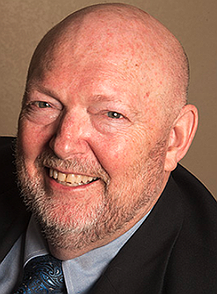Kootenai County commissioners deny cell tower
COEUR d’ALENE — Kootenai County commissioners nixed a proposed cell tower adjacent to Interstate 90.
The board voted 2-1 Thursday to deny a conditional-use permit for applicants WEIS Towers, LLC and Inland Cellular to build a 150-foot lattice tower that would “fill the gap of communication” and increase coverage along I-90.
At a December public hearing, community members provided universally negative feedback about the proposed tower, which would be built within a 100-square-foot fenced area in the 1700 block of Alder Creek Road.
Commissioners Bruce Mattare and Leslie Duncan voted in favor of denying the permit application. Bill Brooks cast the dissenting vote.
“I haven’t seen anything other than anecdotal evidence,” Brooks said, referring to public comments from people who opposed the cell tower due to concerns about aesthetics and negative impacts to property values, as well as fire and health risks. “And if that anecdotal evidence is what we should be ruling on, then I suggest the next step would be to remove all the cell phone towers in Kootenai County. All of them.”
At that, the audience of more than 30 people broke into applause, with some saying the county should do just that.
“But I don’t believe that,” Brooks added with a laugh.
Kootenai County staff said the applicants met all requirements and standards under Kootenai County code and demonstrated a lack of cell coverage in the area. Staff recommended that commissioners approve the application, as did the hearing examiner.
County planner Amy Hilland said public agencies, including East Side Highway District and Kootenai County Fire and Rescue, did not raise concerns about the proposed cell tower.
Mattare pointed to the Telecommunications Act of 1996, which prohibits local jurisdictions from preventing cell service in areas where there is none and from denying applications based on technology that is approved by the Federal Communications Commission.
Mattare said the threshold for what is considered “gaps in service” should be higher today than it was in 1996, especially in areas where some cell service already exists.
“It was not established that the gap in service was continuous, but rather under only certain conditions in this particular location,” he said of the proposed cell tower.
Commissioner Leslie Duncan shared a similar sentiment, adding that the 1996 law doesn’t account for today’s technology.
“We don’t know if the technology that exists today is more harmful, less harmful,” she said. “We don’t know.”
Pat Braden, civil deputy prosecutor for the county, cautioned against that reasoning.
“I don’t think that’s a valid basis for denial, to be honest,” he said. “That falls into the health effects category that cannot be a basis for a decision on these issues. You have to base your decision on substantial evidence in the record.”
Duncan also said she was concerned about the possibility of fires caused by lightning strikes on the proposed tower and also considered the concerns voiced by community members.
“I couldn’t find a good reason to support this when I have to listen to constituents when they have valid concerns,” she said.





